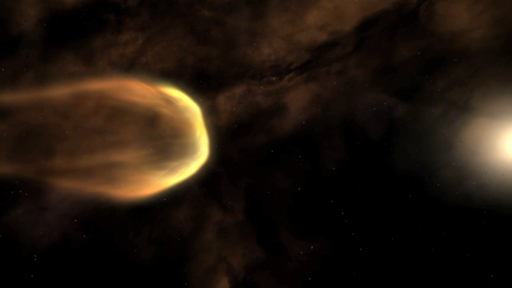4.2.1 Protoplanetary disc formation
The following animation shows the process of proplyds forming within a nebula.
Note: this video has no sound.

The proplyds, visible as small bright points, are illuminated by the star Theta 1 Orionis C, which is the most massive of the four stars in the Trapezium cluster in the Orion Nebula. The illumination, which heats up the disc material as well as lighting the proplyds, is also a threat, as the hot disc material will dissipate before planets can form.
The hypothesis that stars and planets form in a nebula suggests that our Sun and Solar System formed from a rotating, flattened disc. This idea was first proposed by the Prussian philosopher and astronomer Immanuel Kant in 1755, and further developed by Pierre Simon Laplace in 1796. It remains the most widely accepted theory of planet formation to this day.
In the next section, you will see what happens when part of a nebula collapses.
